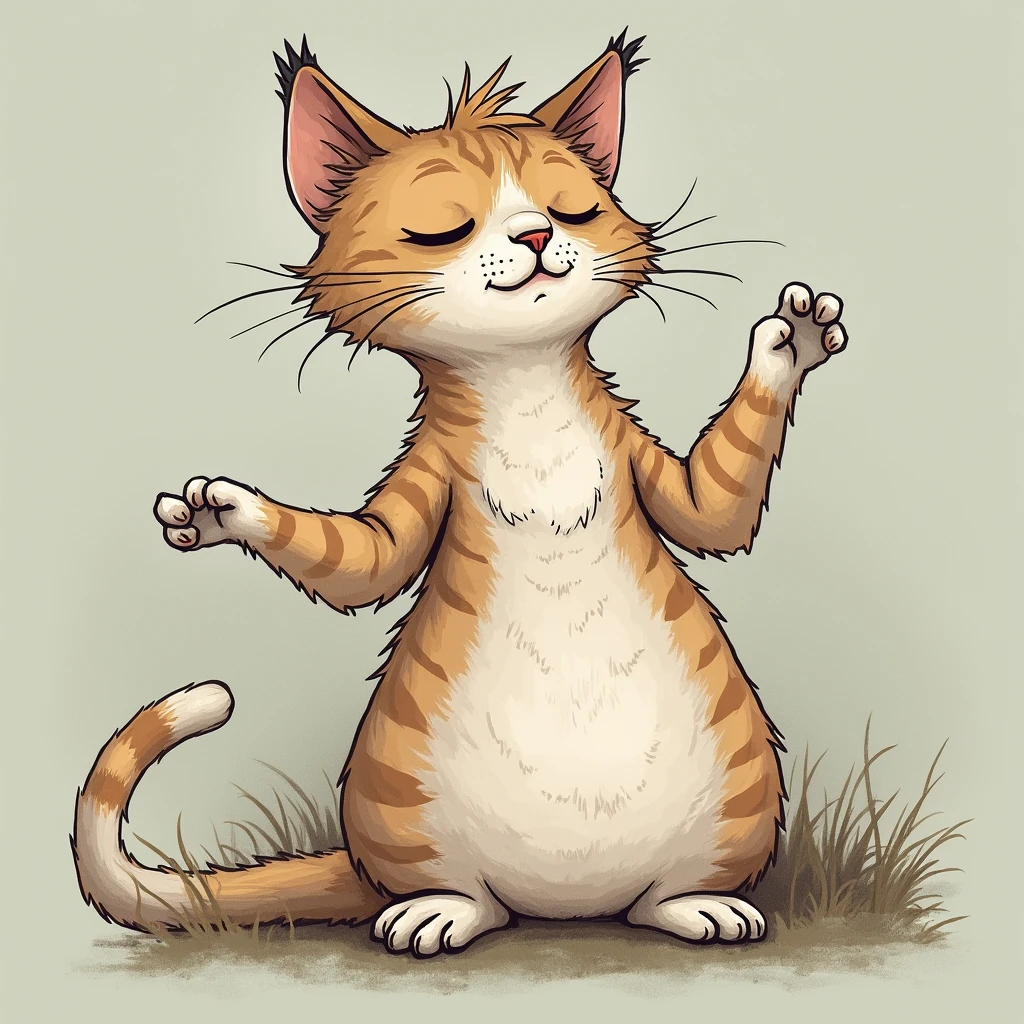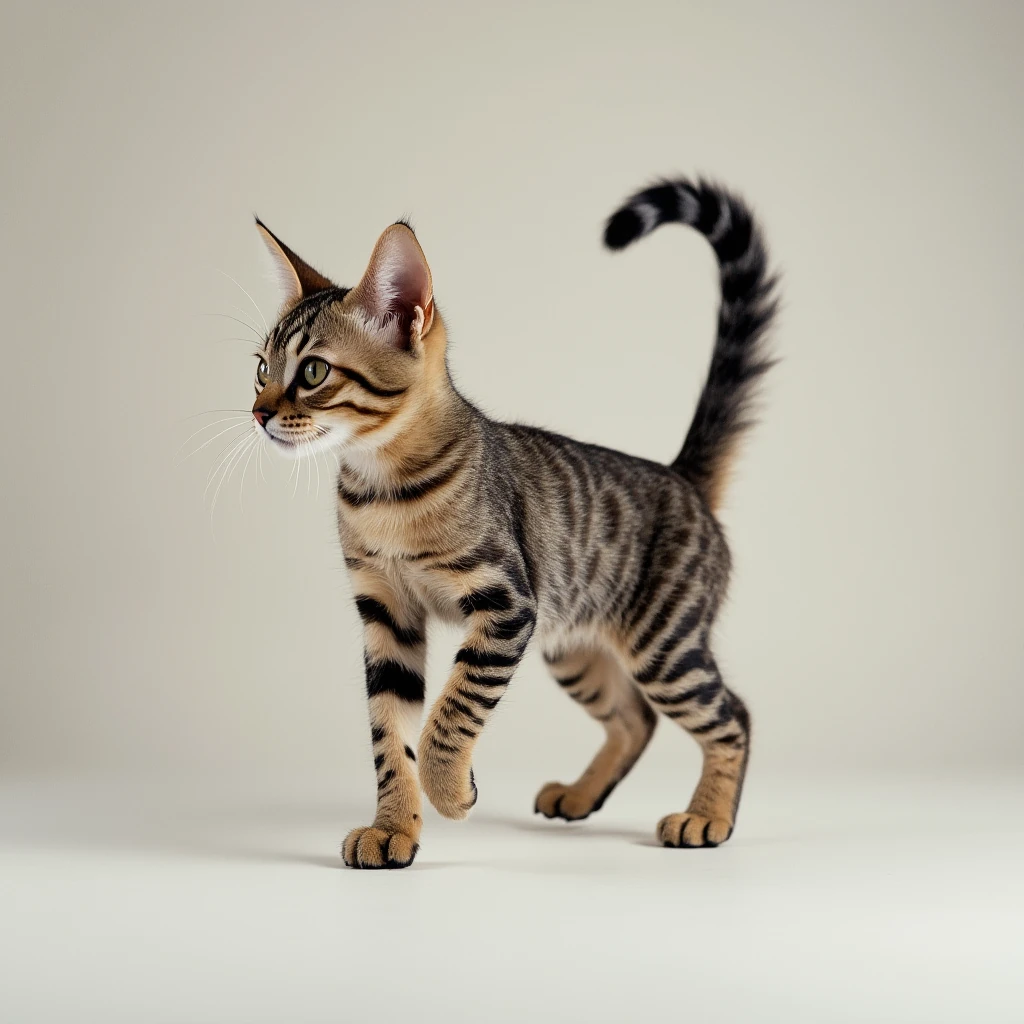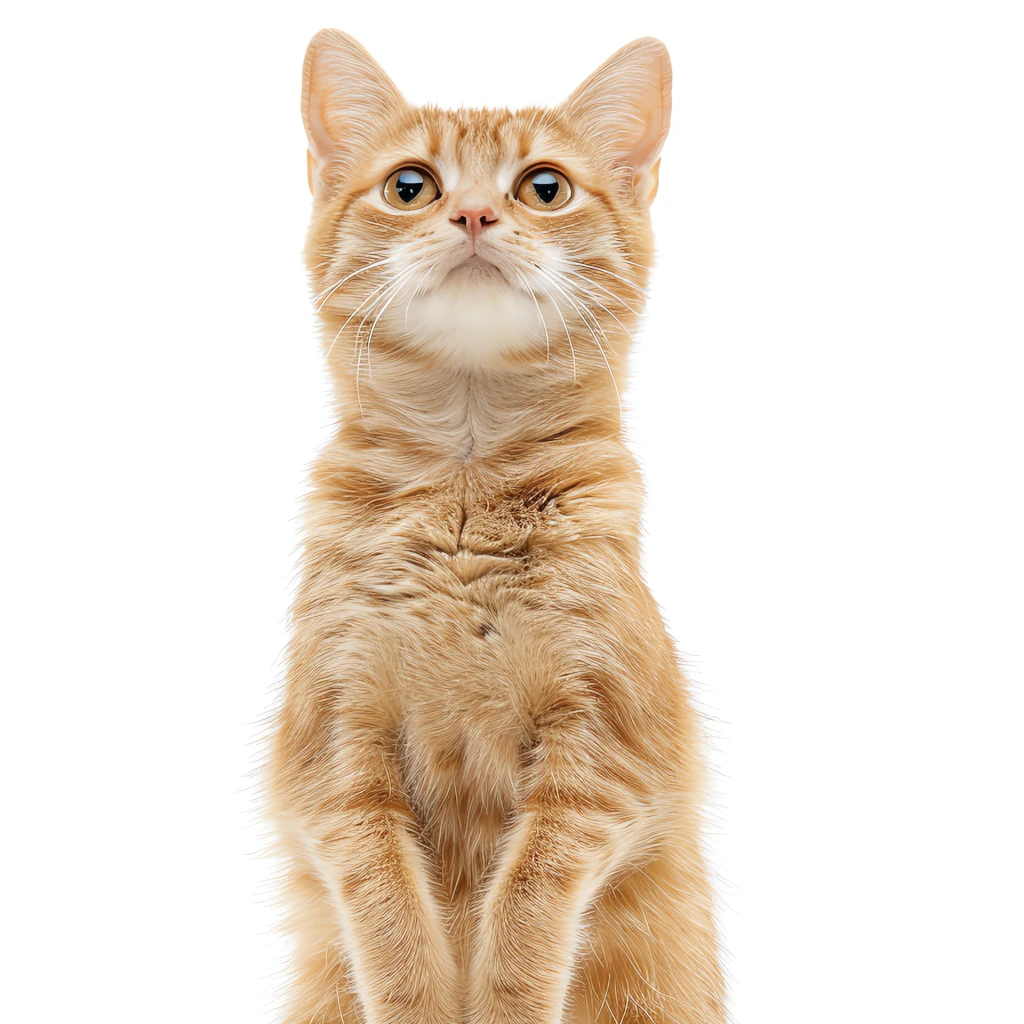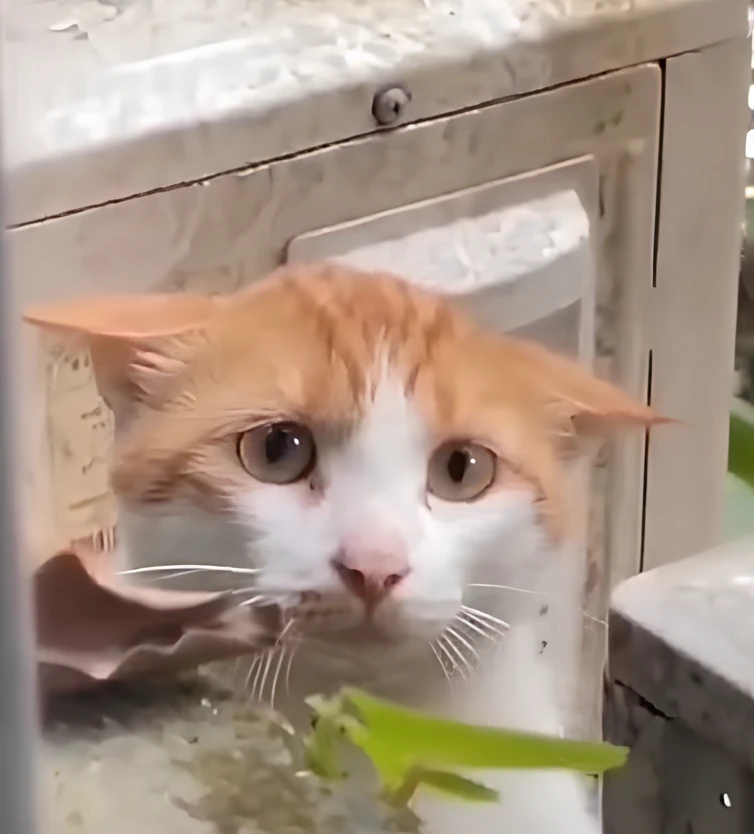- 1. Introduction
- 2. The Basics of Cat Body Language
- 3. Decoding Cat Body Postures
- 4. Understanding Tail Movements
- 5. Reading Cat Ears and Facial Expressions
- 6. Decoding Vocalizations: What Is Your Cat Trying to Say?
- 7. Scent Marking and Other Territorial Behaviors
- 8. Recognizing and Managing Signs of Stress or Anxiety in Cats
- 9. Building a Trusting, Harmonious Relationship with Your Cat
- 10. Case Studies or Examples of Real-Life Body Language Decoding
- 11. Conclusion
1. Introduction
Cats are known for their mysterious, often misunderstood ways of communicating. Unlike dogs, who tend to be more expressive and easy to read, cats use a subtle mix of body language, vocalizations, and even scent cues to express their emotions, needs, and boundaries. For many cat owners, deciphering these signals can feel like learning a new language—and in a way, it is!

Learning to read your cat’s body language is key to building a strong, trust-based relationship with them. When you know what your cat is feeling or thinking, you can respond in ways that make them feel safe and understood. By understanding these cues, you can also prevent unwanted behaviors or stress responses by adjusting your interactions and environment to better suit your cat’s needs.
In this guide, we’ll dive into the essential elements of cat body language and explore the different ways cats express themselves. From tail movements and ear positions to vocalizations and scent marking, each of these signals provides clues about your cat’s mood, intentions, and comfort level. By the end of this post, you’ll be equipped to interpret your cat’s cues like a pro, helping you foster a happier, healthier relationship with your feline friend.
2. The Basics of Cat Body Language
To truly understand your cat, it helps to start with the fundamentals of how they communicate. Cats primarily rely on a combination of body postures, tail movements, ear positions, eye expressions, and vocalizations to signal how they feel in a given moment. Each of these subtle cues gives insight into their comfort, curiosity, fear, or even playfulness.
By paying close attention to these physical signals, you can better understand whether your cat is feeling relaxed, anxious, or ready to pounce into action. Let’s dive into these basics to help you decode their moods with more clarity.

3. Decoding Cat Body Postures
Your cat’s posture can reveal a lot about their mood and intentions. Here are some common body postures and what they likely mean:
- Relaxed and Content: A cat that feels safe and comfortable will have a loose, slightly stretched body posture. They may lie on their side, belly up, or tuck their paws neatly under their body. Slow blinking is another sign of relaxation and trust—a kind of “cat kiss” that signals affection.
- Alert and Curious: When a cat is interested in something new, their body will appear slightly tense but not aggressive. Ears will be perked up and pointed forward, and their posture will be upright, with their weight evenly distributed, ready to pounce or investigate. This is often the posture you’ll see when your cat is exploring a new object or looking out the window.
- Fearful and Anxious: When a cat feels threatened or scared, they may arch their back, make their fur stand on end, and shrink closer to the ground in an attempt to look larger and protect themselves. They may also pull their body back while keeping their head forward, assessing whether they need to defend or flee.
- Aggressive or Agitated: An angry or highly agitated cat will typically have a low crouch, pupils dilated, and a fixed, direct stare. They might lower their body to the ground, ears flattened back, and tail either thumping or tightly wrapped around their body. This posture is usually a warning—approach carefully, if at all.
Knowing these basic postures is invaluable, as they help you understand your cat’s comfort level and gauge whether they feel safe, curious, or threatened. By recognizing these signs, you can respond in ways that make your cat feel supported or, if needed, allow them the space they need to feel comfortable.
With this foundation, let’s move to a crucial component of cat communication—tail movements.
4. Understanding Tail Movements
A cat’s tail is one of its most expressive tools, often giving away emotions that the rest of its body may not. Tail movements and positions can vary widely, and each one conveys a specific message. By learning to interpret these tail signals, you can gain deeper insight into what your cat is experiencing or about to do.
Here are several usual tail positions and what they generally signify:

- High Tail: When a cat’s tail is held high and upright, it’s usually a sign of confidence and friendliness. Cats often greet their owners or other friendly cats this way, signaling that they feel secure and happy. A high tail, sometimes with a slight curl at the tip, is a good indication that your cat is in a positive mood.
- Low or Tucked Tail: A tail that’s low to the ground or tucked tightly under the body usually indicates fear, submission, or a sense of threat. This is often seen in new or uncertain environments or around unfamiliar people or animals. If you notice this, it’s best to approach your cat calmly and give them time to adjust.
- Flicking or Swishing Tail: A fast, flicking tail or one that lashes back and forth is usually a sign of irritation or frustration. This is often the posture you’ll see if your cat is watching something intently (like a bird outside) or if they’re starting to feel overstimulated by petting. It’s usually a good idea to back off if your cat’s tail is swishing, as it can quickly escalate to defensive behavior.
- Puffed-Up Tail: When a cat’s tail puffs up dramatically, it’s a sign of alarm or defensive aggression. Cats do this to appear larger and more intimidating, usually in response to feeling cornered or frightened. They might pair this with an arched back and flattened ears. If you see this, give your cat plenty of space, as they’re trying to protect themselves and could react aggressively if they feel further threatened.
- Tail Wrapped Around Body or Legs: A cat wrapping its tail around itself while sitting or lying down is often a sign of relaxation or self-soothing. It can also mean your cat is feeling a little uncertain but wants to feel secure. This position can also indicate a cat’s contentment when sitting close to you or another pet.
Tips for Responding to Tail Movements
Each tail position or movement gives you clues on how best to respond to your cat:
- With a high tail, feel free to engage in play or affection; your cat is likely to respond positively.
- For a low or tucked tail, try to offer comforting words, sit at their level, and avoid sudden movements.
- If the tail is flicking or swishing, consider stopping petting or backing off to give them space, as this often indicates overstimulation.
- For a puffed-up tail, ensure your cat has a clear escape route. Avoid touching or approaching them, as they are in a defensive, reactive state.
Learning to interpret tail movements helps you avoid miscommunications and ensures that your cat feels understood and supported, especially in stressful or uncertain situations.
Next, we’ll look at another important part of cat communication: reading their ears and facial expressions.
5. Reading Cat Ears and Facial Expressions
A cat’s ears and facial expressions are key indicators of their mood and intentions, often providing subtle clues about their inner state. While their tail may signal broad emotions, ears and facial cues add nuance, helping you detect if your cat feels curious, relaxed, or on edge. By learning to read these signals, you can fine-tune your approach to interacting with your cat.
Here’s a breakdown of common ear positions and facial expressions, and what they reveal about your cat’s mood:
Ears:
- Forward Ears: When your cat’s ears are pointed forward, they are usually alert, interested, and engaged. This position often indicates curiosity and comfort, and it’s a great time to interact with your cat or introduce a toy for playtime. Forward ears can also be a sign that your cat feels safe and is observing their environment with interest.

- Sideways or “Airplane” Ears: Ears that are slightly flattened and pointed to the sides, resembling airplane wings, are typically a sign of uncertainty or mild discomfort. This position can indicate that your cat is cautious, perhaps assessing a new situation or encountering something unfamiliar. If you notice this, give your cat space to process their surroundings and avoid sudden movements.

- Flattened or Backward Ears: When a cat’s ears are fully flattened against the head, they are feeling scared, defensive, or agitated. Flattened ears are often accompanied by other signs of aggression or fear, such as a puffed-up tail or arched back. This is a clear warning sign that your cat is uncomfortable, and it’s best to avoid close interaction until they’ve calmed down.

Eyes:
- Slow Blinking: A slow, relaxed blink is often a sign of trust and affection. Cats use this gentle blink as a way to communicate calmness and comfort with someone they trust. If you want to bond with your cat, try slow blinking back—it’s like a “cat hug” and helps to foster trust.
- Dilated Pupils: Enlarged or fully dilated pupils can indicate excitement, fear, or high arousal. This might happen during intense play or if your cat feels startled. It’s essential to assess other body language cues, such as their tail or posture, to interpret whether your cat is excited and ready to play, or frightened and on edge.
- Narrowed or Constricted Pupils: Very small or constricted pupils can signal aggression or irritation, especially if combined with a steady, direct stare. Narrowed pupils may occur when a cat feels threatened or when they’re ready to pounce, so be cautious if you notice this expression.
- Direct Staring: A fixed, unblinking stare can signal aggression, dominance, or even hunting instincts. In cat language, a prolonged stare isn’t necessarily a friendly gesture. If your cat is staring intently at you or another animal, assess the situation carefully, as they might be feeling defensive or considering an assertive action.
Tips for Responding to Ear and Eye Signals
Understanding your cat’s ear and eye language allows you to approach interactions in a way that aligns with their comfort level:
- When ears are forward and eyes relaxed, feel free to engage in gentle petting or play; your cat is likely in a receptive and friendly mood.
- If ears are sideways and pupils are slightly dilated, give your cat a bit of space or wait until they seem more comfortable before interacting.
- For flattened ears and constricted pupils, avoid making direct eye contact, as this can feel threatening to a cat. Instead, sit or stand nearby at a respectful distance and let your cat approach you if they feel ready.
Learning to read these subtle signals enables you to adjust your behavior to suit your cat’s mood, helping them feel understood and secure in their environment.
With a good grasp on ear and eye signals, let’s move on to understanding another vocal form of communication: cat vocalizations and what each sound can mean.
6. Decoding Vocalizations: What Is Your Cat Trying to Say?
While cats primarily rely on body language to communicate, they also use vocalizations to express their needs, emotions, and even to engage with their humans. Each sound a cat makes has its own context and meaning, and understanding these vocal cues can help you respond effectively to their needs and moods. Here’s a breakdown of common cat vocalizations and what they generally signify:
Common Cat Sounds and Their Meanings:
- Meowing: Cats are known for their distinctive meows, and they reserve this form of communication almost exclusively for humans. The meaning of a meow can vary greatly depending on its tone, pitch, and repetition.
- Short, soft meows often signal a greeting or a way to get your attention, like a friendly “hello.”
- Repeated or insistent meows can indicate that your cat wants something specific, such as food, water, or playtime.
- Loud, drawn-out meows may be a sign of frustration, annoyance, or a strong demand for attention.
- Purring: Purring is usually associated with contentment, but it can also have other meanings depending on the context.
- Soft, rhythmic purring generally signals that your cat is relaxed, happy, and feels safe. Cats often purr when they are being petted or cuddling.
- Louder or irregular purring can sometimes occur if your cat is anxious, nervous, or even in pain. Cats may purr in stressful situations as a self-soothing mechanism, so be sure to consider other body language cues if you’re unsure.
- Trilling or Chirping: This sound is a high-pitched noise often used as a friendly greeting or to get attention. Cats may chirp when they’re excited to see you or to encourage you to follow them to something they want you to see, like a favorite toy or food bowl. Kittens often use chirping to communicate with their mother.
- Growling and Hissing: These are clear warning sounds that indicate your cat is feeling threatened, fearful, or extremely irritated.
- Growling is usually a low, rumbling sound that serves as a defensive warning to “stay away.”
- Hissing is a sharp, intense sound, often paired with an arched back and flattened ears, signaling that your cat is highly uncomfortable and ready to defend itself if necessary.
- If you hear growling or hissing, it’s best to give your cat plenty of space to calm down.
- Yowling: A long, drawn-out wail or yowl is often used by cats to express distress or communicate something urgent.
- In older cats, yowling can sometimes be a symptom of age-related confusion or a sign of sensory issues.
- In unspayed or unneutered cats, yowling can signal mating behaviors, as it is often used to attract potential mates.
- If your cat is yowling frequently, consider consulting a veterinarian to rule out any medical issues, especially if this behavior is new or unusual.
Tips for Responding to Cat Vocalizations
When you understand your cat’s vocalizations, you can respond more effectively to their needs and emotions:
- If your cat is meowing softly or chirping, they may simply be looking for a bit of attention or interaction. Take a moment to pet them or acknowledge their presence.
- Loud or insistent meows often mean your cat wants something specific. Check if they need food, water, or a clean litter box, as these are common reasons for demanding meows.
- For purring, gauge the context. If your cat seems relaxed and comfortable, enjoy the moment together. But if the purring is coupled with signs of stress or discomfort, it could indicate a need for comfort or, in some cases, a visit to the vet.
- Respond to growling or hissing by backing away and giving your cat space. These sounds mean they feel threatened or defensive and need room to feel safe again.
Cat vocalizations are a direct way for your cat to communicate with you, and by interpreting these sounds, you can build a deeper, more responsive relationship. Next, let’s explore the often-overlooked yet significant way cats communicate through scent marking and other territorial behaviors.
7. Scent Marking and Other Territorial Behaviors
In addition to body language and vocalizations, cats use scent as a powerful tool for communication. Scent marking allows cats to establish territory, leave messages for other animals, and create a comforting environment marked by their own familiar scent. Understanding these behaviors can give you insight into your cat’s need for territory and security, as well as how they feel about their surroundings.
Here’s a closer look at how cats use scent marking and other behaviors to communicate:
Types of Scent Marking Behaviors:
- Rubbing: One of the most common forms of scent marking, rubbing involves your cat using their face, head, or body to brush against objects (or people). Cats have scent glands located in their cheeks, chin, and forehead that release pheromones. When your cat rubs against you or objects in the home, they’re marking their “territory” and claiming you or the area as part of their environment.
- Friendly rubbing: When your cat rubs against you, it’s a sign of affection and trust. This behavior reinforces social bonds and signals that your cat feels comfortable around you.
- Rubbing on furniture or walls: This behavior helps your cat mark familiar areas with their scent, creating a “safe space” where they feel secure.
- Bunting: Similar to rubbing, bunting is when a cat gently butts their head against you or objects. Bunting is a form of scent marking that also signals affection and trust. Cats typically bunt when they are comfortable and view the person or item as a trusted part of their world.
- Scratching: Scratching is both a grooming behavior (for claw maintenance) and a way of marking territory. Cats have scent glands in their paws that release pheromones when they scratch surfaces like furniture, trees, or scratching posts. By leaving their scent along with visible scratch marks, they’re effectively signaling to other animals that this area is “theirs.”
- Provide scratching posts in areas where your cat often scratches, which not only helps satisfy their marking instinct but also keeps your furniture safe.
- Spraying: Spraying is a less desirable form of scent marking that involves a cat backing up to a vertical surface and releasing a small amount of urine. Although it can happen in any cat, spraying is more common in unneutered males and is typically a territorial behavior. Cats may spray when they feel threatened by other animals or new people in their environment, or in response to stress.
- If your cat is spraying indoors, consider consulting a veterinarian, especially if the behavior is new. Spraying can sometimes be a sign of stress or a medical issue, so addressing it early is helpful.
Tips for Managing Scent Marking Behaviors
Understanding and managing scent marking can help you maintain harmony in your home while respecting your cat’s natural instincts:
- Provide plenty of familiar objects: Cats feel more secure when they have familiar objects with their scent around. Blankets, toys, and scratching posts with your cat’s scent can help make the environment feel safe and comforting.
- Encourage positive marking behaviors: Rubbing and scratching are natural and beneficial for your cat. Place scratching posts in common areas to encourage healthy scratching habits, and praise your cat when they use them.
- Handle spraying carefully: If your cat sprays, ensure they have a secure, private space and monitor for potential stress triggers, like changes in routine or new animals. Cleaning spray areas thoroughly with enzyme-based cleaners can remove lingering odors, reducing the likelihood of repeat marking.
Cats rely heavily on scent to navigate their environment and establish comfort zones. By understanding and supporting their scent-marking behaviors, you create a secure space that respects your cat’s need for territoriality and personal scent “signatures.”
With scent marking and territorial behavior understood, let’s now move into recognizing and managing signs of stress or anxiety in your cat.
8. Recognizing and Managing Signs of Stress or Anxiety in Cats
Just like people, cats can experience stress and anxiety. Changes in their environment, routine, or social circle (like the addition of a new pet or person) can trigger stress in cats, as they are creatures of habit and often thrive on predictability. Recognizing signs of stress or anxiety allows you to make adjustments to support a calm, secure environment for your cat.
Here are common indicators of stress in cats, along with tips to help alleviate anxiety:
Signs of Stress and Anxiety in Cats:
- Hiding or Avoiding Interaction: If your cat suddenly starts hiding more than usual or avoids interaction with family members, this could be a sign they are feeling insecure or anxious. Occasional alone time is normal, but frequent hiding might indicate stress.
- Changes in Appetite: A stressed cat may lose interest in food or, conversely, eat more than usual. Any significant change in eating habits should be monitored closely, as stress-related eating changes can lead to weight issues or digestive problems.
- Increased Grooming or Over-Grooming: Cats often groom themselves more frequently when they’re feeling anxious, as grooming can have a calming effect. However, excessive grooming—especially to the point of fur loss or skin irritation—can be a sign of chronic stress.
- Litter Box Issues: If your cat starts urinating or defecating outside the litter box, it could be a sign of stress or a medical issue. Anxiety may make your cat avoid their litter box, especially if it’s in a high-traffic area or if another pet is nearby.
- Aggression or Unusual Reactivity: Cats under stress may become more irritable or aggressive. They might hiss, swat, or bite more than usual, even at people or other pets they usually get along with. These behaviors are often a defensive response to feeling unsafe.
Tips for Managing Cat Anxiety:
- Create a Safe Space: Designate a quiet, comfortable area in your home where your cat can retreat when they feel overwhelmed. This could be a cozy bed in a secluded room or a space with familiar items like toys, blankets, and scratching posts. Giving your cat a predictable space of their own can help them feel safe and secure.
- Stick to a Routine: Cats are creatures of habit, and they thrive on a predictable daily routine. Aim to maintain consistency in feeding, playtime, and bedtime routines. Sudden changes to routine, like rearranged furniture or new household members, can be unsettling, so ease them into these changes gradually.
- Use Calming Pheromones: Products like pheromone diffusers, sprays, and collars can help reduce stress in cats. These products mimic feline facial pheromones, which help cats feel more relaxed and secure in their environment.
- Engage in Regular Playtime: Engaging in interactive play helps reduce stress by giving your cat a healthy outlet for pent-up energy. Play sessions can distract your cat from stressors and build confidence. Use toys that mimic natural hunting behaviors, like feather wands or laser pointers, to encourage exercise and mental stimulation.
- Monitor and Reduce Stress Triggers: Observe what might be triggering your cat’s anxiety, such as loud noises, unfamiliar visitors, or a new pet. If possible, limit exposure to these triggers or gradually desensitize your cat by introducing the stressor in small, manageable doses.
- Consider Professional Help: If your cat’s anxiety persists despite your efforts, consulting a veterinarian or a cat behaviorist can be helpful. A professional can help you develop a tailored plan to manage your cat’s stress and, if necessary, prescribe medication or natural supplements to assist with anxiety.
Understanding and managing your cat’s stress levels can greatly improve their quality of life. By providing a supportive, secure environment, you can help your cat feel at ease and prevent the development of chronic stress-related behaviors.
With these strategies in place, you’re well on your way to deepening your bond with your cat through understanding and communication. In the next and final section, we’ll discuss how to apply all these insights to build a trusting, harmonious relationship with your feline companion.
9. Building a Trusting, Harmonious Relationship with Your Cat
Now that you understand the basics of cat communication—from body language and vocalizations to scent marking and stress management—you’re equipped to foster a deeper bond with your feline companion. Building a trusting relationship with your cat takes patience, consistency, and respect for their natural instincts and boundaries. By applying what you’ve learned, you can create a mutually rewarding, harmonious connection.
Here’s how to put it all together:
Advice for Enhancing Your Connection with Your Cat:
- Respect Their Boundaries: Cats value their independence and need personal space. Recognize when your cat wants to be left alone, especially if they’re showing signs of stress or irritation. By respecting their boundaries, you demonstrate trustworthiness, which helps them feel safe around you.
- Practice Gentle, Positive Reinforcement: Positive reinforcement is key to teaching your cat to associate you with good things. Use treats, praise, or gentle petting to reward desirable behaviors, such as coming to you when called or using the scratching post. Avoid punishment, as it can damage your relationship and lead to fear or aggression.
- Engage in Daily Play: Regular playtime is essential for your cat’s physical and mental well-being. Try different types of toys to find what excites them, and focus on interactive play that mimics hunting. This is a natural way for your cat to expend energy and feel fulfilled. Playtime also helps your cat bond with you as a source of fun and stimulation.
- Use Communication Cues: Now that you’re familiar with your cat’s body language and vocal cues, try to respond to their signals. If your cat blinks slowly at you, try blinking back as a gesture of trust and affection. If they rub against you, give them a gentle pat in return. These small gestures acknowledge your cat’s attempts to communicate and make them feel understood.
- Provide Comfort and Security: Make sure your home environment is cat-friendly, with cozy spots, perches, scratching posts, and access to windows. Cats feel most comfortable when they have places to retreat to, observe from, and engage with their environment. A safe and stimulating environment helps your cat relax and builds a foundation for trust.
- Be Patient and Consistent: Building a strong bond takes time, and each cat has their own pace. Some cats may warm up quickly, while others may take months to build trust. Be consistent in your interactions and give your cat time to adjust to new experiences or routines. Your patience will pay off in the long run, as your cat grows more comfortable and trusting.
The Advantages of a Close Relationship with Your Cat
When you invest time in understanding your cat’s unique personality and needs, you create a relationship built on mutual trust and respect. A well-bonded cat is more likely to show affection, approach you for attention, and engage in positive interactions. Moreover, a strong bond can reduce behavioral issues, as your cat feels secure and less prone to stress-related reactions.
By recognizing and responding to your cat’s individual communication style, you’ll foster a peaceful, joyful relationship that enhances your life together. Cats may be independent creatures, but with patience, understanding, and love, they can become loyal, loving companions who bring warmth and happiness to your home.
With this comprehensive understanding of cat behavior and communication, you’re now prepared to enjoy a fulfilling relationship with your feline friend. Embrace each stage of learning and bonding, and remember that every small effort to understand your cat will lead to a happier, more harmonious life together.
10. Case Studies or Examples of Real-Life Body Language Decoding
Understanding feline body language can significantly improve the relationship between cats and their owners. Below are some real-life stories that highlight how cat owners have successfully learned to decode their cats’ unique signals and improve their bond.
Story 1: Learning to Recognize “Play Mode”
Sarah adopted a shy kitten named Luna. At first, Luna seemed aloof, often hiding and avoiding contact. Over time, Sarah noticed that Luna’s tail would start to flick and her ears would perk up slightly when she was in the mood to play. Recognizing these cues, Sarah began approaching her gently during these moments, using interactive toys. By responding to Luna’s play signals, Sarah was able to bring out Luna’s playful side, and they soon formed a much closer bond.
Story 2: Spotting Signs of Stress in a New Home
When John moved to a new apartment, his cat, Whiskers, started hiding more often and meowing loudly. By reading Whiskers’ body language—dilated pupils, flattened ears, and a crouched posture—John realized his cat was feeling stressed. He provided Whiskers with a safe space by placing a cozy bed in a quiet room. Gradually, Whiskers adapted, and John’s attentiveness to his cat’s body language helped Whiskers feel secure in the new home.
Story 3: Recognizing When Affection is Welcome
Lily always thought her cat, Muffin, didn’t enjoy being held. But after observing Muffin’s body language, she noticed that when Muffin’s tail was slightly raised and her body relaxed, she was more receptive to being petted and even held. By paying attention to Muffin’s signals, Lily learned to interact in a way that respected Muffin’s comfort level, which strengthened their bond.
These examples illustrate how understanding cat body language fosters trust and a deeper connection between cats and their owners. By recognizing and respecting each cat’s unique signals, owners can create a harmonious and positive environment.
11. Conclusion
Understanding cat body language is essential for creating a strong and trusting relationship. Cats communicate their emotions and needs through subtle signals, and being attuned to these cues helps owners respond appropriately. Observing and interpreting your cat’s body language can lead to a happier, healthier pet and a stronger bond between you and your furry companion.
Have you noticed specific body language signals from your own cat? Or do you have questions about interpreting your cat’s behaviors? Share your stories and questions in the comments below—we’d love to hear about your experiences!


